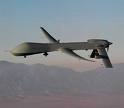Killing Thousands in Afghanistan: Record Number Of Deadly US Drone Strikes

The United States has carried out more drone strikes this year in Afghanistan than it has during its eight-year-long air war in Pakistan, launching 447 strikes and killing thousands while also reducing its air surveillance.
At a time when the US is transitioning military power to the Afghan government and planning its 2014 withdrawal, it broke a new record with the 447 drone strikes it launched in the war-torn country in 2012. Not only did the US launch more drones this year than ever before, but it carried out more strikes in Afghanistan than it did in Pakistan in the past eight years, which is how long the CIA has been conducting such strikes. About 338 drone strikes have been launched in Pakistan.
The data, which was released by the US Air Force, shows that drone strikes have been steadily increasing in Afghanistan, even after former terrorist leader Osama bin Laden was killed in 2011 and the conflict has been winding down. Last year, the US carried out 294 drone strikes in Afghanistan, which was up from 278 in 2010.
The average number of drone strikes per month has also been on the rise. This year, the average was 33 drone strikes, while last year, it was 24.5 At the same time, drone strikes have been increasingly criticized by both legislators and the American public.
A December report by the Brave New Foundation condemned the use of drones, which have killed hundreds of children – and possibly many more that were not reported. In Pakistan, 178 children were reportedly killed by US drones.
“Obama does not kill children deliberately. But their deaths are an inevitable outcome of the way his drones are deployed,” writes The Guardian’s George Monibot, who finds it hypocritical for the president to mourn the deaths of 20 US children killed in a shooting in Connecticut, while ignoring the fact that hundreds of children have died in drone strikes overseas.
US air surveillance in Afghanistan has significantly decreased, but still, drone strikes have been launched at an even greater rate. Surveillance sorties, many of which are flown by drones, decreased from an average of 3,183 per month in 2011 to 2,954 in 2012.
“The numbers are yet another powerful data illustrating the fact that unmanned systems are here and they are here to stay,” Peter W. Singer, who runs the Brooking Institution’s 21st Century Defense Initiative, told Wired.
Meanwhile, the media continues to publish harrowing accounts regarding the effect of US drone strikes, both on the victims and those who are forced to execute the deadly strikes.
The German publication Der Spiegel published an account of a former drone pilot whose bunker was located in New Mexico, from where he watched the strikes on video. After the drone pilot discharged a Hellfire missile into a mud house in northern Afghanistan, he witnessed a small child step into the picture. Much of the house was completely destroyed, and the pilot never again saw the child on video. The pilot says he was scarred from the incident, and still thinks of the people whose fate he decided that day.
“I felt disconnected from humanity,” he said.
But such occurrences are common in Afghanistan and Pakistan. While there may be no numbers accurately reflecting the number of civilians killed in drone strikes, they are in the thousands, and significantly on the rise in a country that the US says it is withdrawing from.
Stop NATO e-mail list home page with archives and search engine:
http://groups. yahoo.com/ group/stopnato/ messages
Stop NATO website and articles:
http://rickrozoff. wordpress. com

